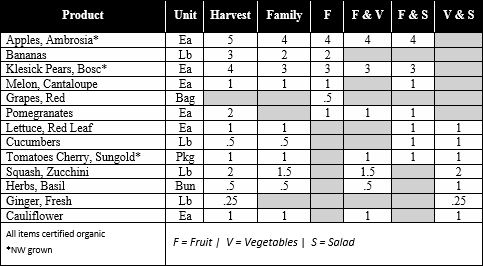In August of 2003, Joelle and I purchased our current farm in all its glory. Never mind the buildings (where the original barn was lying flat in a heap of timber), or the funky carport attached to the front of a once beautiful farmhouse, or the machine shop/equipment storage barn that was, well, still “standing” for now!
We had been shopping for a farm for 5 years. We looked at everything from Montesano, to Goldendale, to Rockport, to Darrington, to Tonasket. The worst part was that we knew we wanted to farm; we just didn’t know what kind of farm we wanted to be.
When you don’t know what kind of farm you want to be, just about any farm will work. Thankfully for us, we stumbled across this previously described gem and got to work restoring “her” to her former glory. What really sold us on this place was not the house, but the equipment shed and the soil.
About the time we discovered this farm, we had finally settled on growing veggies, and we were now looking for farms with good soil. If you are going to buy a farm and raise vegetables of commercial significance you will need rich deep alluvial soils. That means you are going to be living, or at least farming, in the flood plains. That is where we ended up. About as close as you can get to the mouth of the Stillaguamish river, and a whopping 14 feet above sea level. And every one of those 14 feet matters down here.
Allow me to close this loop. In October 2003, this valley got blindsided by a rainstorm that just came sheeting off the hills and flooded everything. We were new and hadn’t really been properly introduced to the Stillaguamish River, but during that flood we knew who the boss was going forward. From 2003 to 2011 we experienced several significant floods, and not much since then.
I know that one day, and possibly this year, the Stillaguamish will remind us who “owns” the valley bottoms. I am thankful, though, that the Stillaguamish River shares this beautiful soil with us farmers rather freely.
In 2003, it had also been a few years since there had been a meaningful reminder of flooding in the valley, and that October flood caught many farmers off guard. By the time they knew it was going to flood, it was too late. Millions of dollars of corn and potatoes went unharvested in our valley. Literally, months of planning and hard work was left to rot.
Which is why, 16 years later when the weather switched in early September to a colder and wetter pattern, every farmer was pushing their equipment and working around the clock to make sure that the Stillaguamish wouldn’t lay claim to any unharvested crops. For the most part the valley is ready in case it floods. Down here it is not if, but when it will flood. At least the crops are out!
-Tristan

